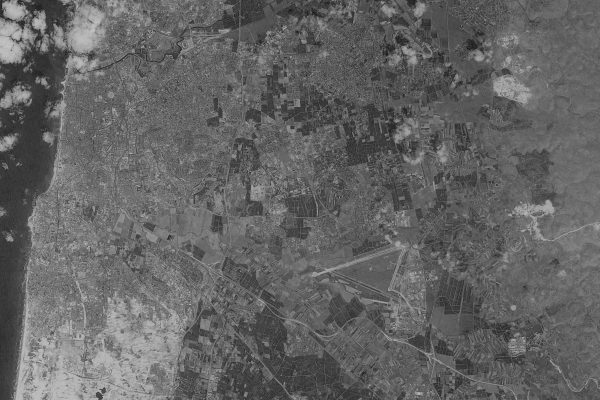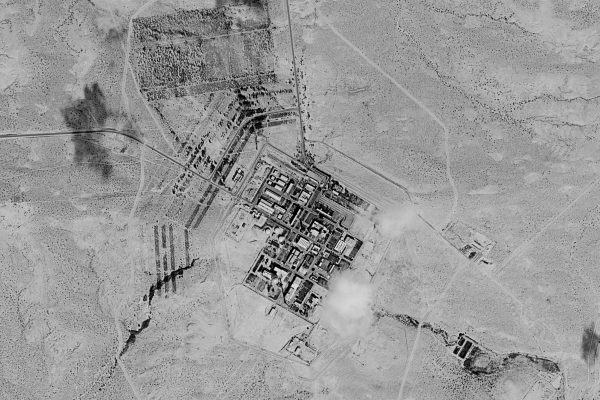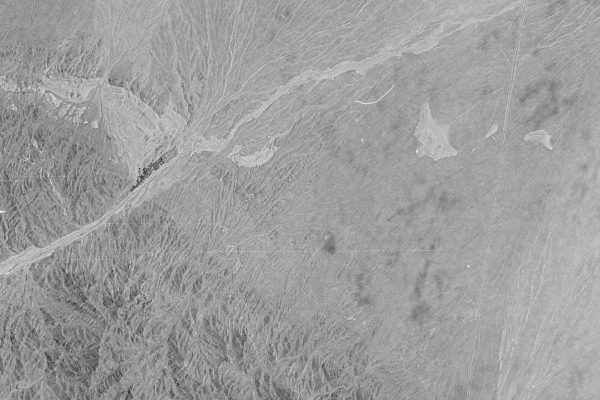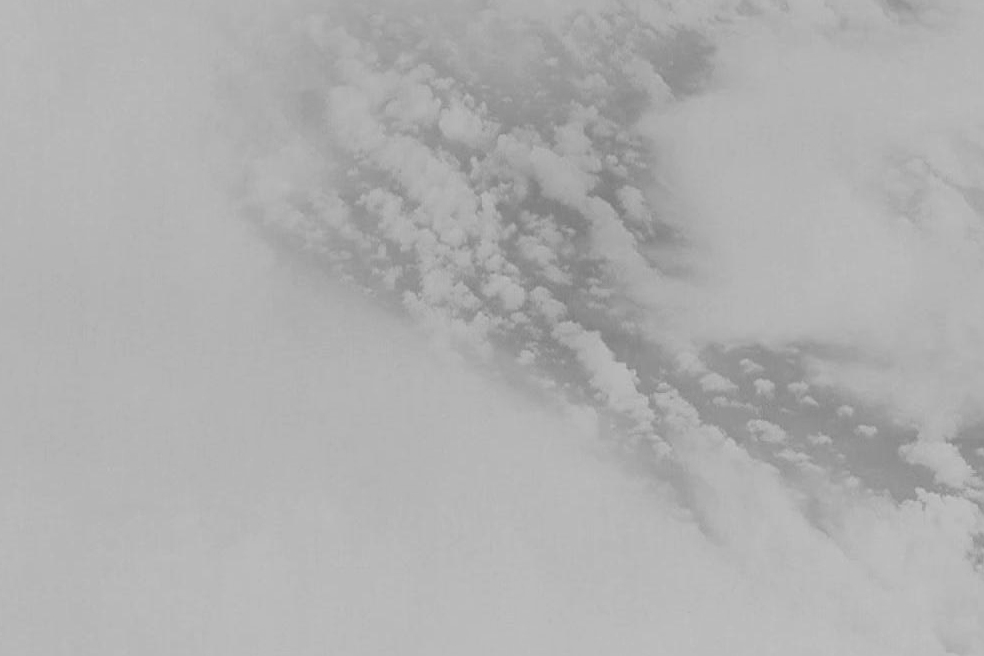Evidence uncovered exclusively by Y-City News has given credence to the argument that a nuclear test was conducted in the late 1970s in the Indian Ocean off the southern African continent.
The Vela Incident, a double flash detected by an American nuclear detonation detection satellite featuring the same name, has never been officially explained, while thought to be a nuclear explosion, there has never been an agreed-upon consensus as to what caused the alert, newly declassified satellite imagery now conclusively shows the area was being tracked and monitored by American Intelligence.
Piecing together declassified data, this new revelation also shows that whoever detonated the nuclear device likely had breached or had inside knowledge of Top Secret American operations and the end-of-life of at least some of its space-based monitoring capabilities, though not all, likely pointing to a nation-state with friendly relations to the United States.

On September 22, 1979, an American Vela satellite detected a double flash with an estimated nuclear atmospheric explosion in the low kiloton range between the islands of Crozet and Prince Edwards, roughly 1,000 miles off the southeastern coast of the African continent.
The decade-old satellite, known as OPS 6911 or VELA 10, had at that point been officially decommissioned, however, it was still operating and able to transmit the detection of a double flash to operators in the United States. At the time of the detection, the area was experiencing a typhoon which made optical reconnaissance unreliable.
An extensive analysis of American spy satellite coverage by this reporter has demonstrated that Keyhole-9 series satellites, for example, which offered resolutions up to two feet, rarely were tasked to capture imagery of islands of low importance, such as those that typically didn’t serve military purposes. The most isolated inhabited island in the world, Tristan da Cunha, for example, has no available coverage.
Only a handful of locations in the Contiguous United States have been withheld from declassification as they would show military secrets, including craft that are still publicly unknown and the building of underground facilities. American islands, however, mostly still remain classified, including but not limited to Puerto Rico, Honolulu and Guam – all featuring capabilities to protect and secure the American way of life in a hostile world.
Utilizing access to American archives, we discovered that the Prince Edward Islands and Kerguelen Islands each were overflown and captured by American spy satellites in the days leading up to the detection of the double flash. More perplexingly, the satellite that captured the images, OPS 3853, also known as KH9-15, captured its last frame on the 19th of September, just mere days before the explosion would occur, indicating whatever nation-state detonated the device knew the satellite’s film reserves were low and would be deorbited, ensuring America’s spying eyes in space would be blind to the forthcoming activities. The next satellite in the series wouldn’t be launched until the following year in June.
The United States also had the KH-8 series of spy satellites available for tasking but their coverage capabilities were severely limited as its primary focus was high-resolution captures, able to discern objects with as great of clarity as a few inches; all of those captures remain classified and it is not known when they will be released to the public. The KH-9 capture of the Prince Edwards Islands, for example, the closest landmass to the detected donation, occurred on September 17, only five days before the double flash.

On the same day that the nuclear detonation was detected, President Jimmy Carter wrote in his diary that “there was indication of a nuclear explosion in the region of South Africa-either South Africa, Israel using a ship at sea, or nothing.” Months later he followed up in his diary by writing “we have a growing belief among our scientists that the Israelis did indeed conduct a nuclear test explosion in the ocean near the southern end of South Africa.”
Publicly though, American officials were much more hesitant to identify Israel as the most likely culprit with many going out of their way to convince others to be less than forthcoming with their beliefs. One of those officials who felt that pressure was Leonard Weiss, who worked alongside Ohio Senator John Glenn for multiple decades, having served as the staff director for the Subcommittee on Energy, Nuclear Proliferation and Federal Servies, a position he held from 1977 through 1980. In a piece written by Weiss in 2019, he recalled being asked by a CBS reporter to discuss the Vela event as the outlet had learned that Weiss had some ‘interesting’ views on its origin.
Senator Glenn learned of the interview when the crew from CBS was already in Weiss’ office. Glenn told Weiss that he should come to his office first and when he arrived, Weiss noted that everyone seemed grim.
“He asked me what I intended to say,” wrote Weiss. “I said I intended to say that in my opinion the flash was a nuclear test.” Senator Glenn told Weiss that he couldn’t say that, adding that the White House was very upset, saying that he could ’cause a serious foreign policy problem for the United States.’
“He (Senator Glenn) said the issue was so sensitive that the White House wanted to avoid creating a telephone record of a discussion with him about my interview,” Weiss wrote further adding that Senator Glenn wanted him to go through with the interview but not mentioning that there was a nuclear test. “This was the only time Glenn had ever told me what to say or not say in an interview,” Weiss added. “Despite the report of the Ruina Panel which had been released some months before and concluded that the flash was most probably not a nuclear event, the attempt to silence me on the issue simply reinforced my view that a nuclear test had occurred.”
Weiss went on to write how the issue of not identifying that a nuclear test had been conducted had bipartisan backing, which led him to conclude that the test had been done by Israel. Even up into the 2010s, decades after the incident, many, including Weiss, attempted to write how the American government and its officials had staged a coverup but found difficulty in getting their views published.
Israel, and for its part the Mossad, has had a perplexing relationship with the United States. Their support was so strong at times that they were given access to nearly unrestricted American spy satellite imagery. They used that access not just to monitor activities in their sphere of influence but to obtain intelligence on the Soviet Union, including the locations of their nuclear weapons programs, as well as launch sites. Officials have recalled that they had such unrestricted access to the collection of imagery that they had pretty much utilized that platform for everything except to physically control or task the satellite. It was well understood that the country possessed such influence on the United States Congress that should their access be denied, America would provide them with their own satellite.
“A contemporary account, citing unnamed US and Israeli sources, notes that the Israelis had indicated that they would be satisfied with either a new satellite and ground station to be provided by the United States for Israel’s exclusive use or with ‘full and equal access’ to an existing US satellite,” wrote a senior analyst with the Department of Defense in a publicly available CIA report.
While clouded in secrecy, it is an open secret that Israel possesses nuclear strike capabilities, including via intercontinental ballistic missiles as demonstrated by their launching of assets into space, including optical imaging satellites.
The current concern of the United States is the balance of power in the Middle East as it pulls back its forces to deal with the growing threat presented by China and the need to support our allies in that region. With Middle Eastern oil mostly going to Europe and Asia and with a taxed Russia in Eastern Europe that no longer necessitates American military protection, the desire to involve itself with such affairs has wavered, including by association protection offered by the military of the United States. Some countries, such as Egypt, have seen a substantial loss of hard currency and a direct hit to their country’s budget by the recent circumventing of the Suez Canal after attacks by Houthi rebels, an Iranian-backed group; only France has been willing to provide oceanic military escorts to support civilian commercial shipping under its flag.
The unfolding events have placed Israel in a predicament, unsure of its level of American support, though the United States has moved additional assets into the region including the USS Abraham Lincoln Carrier Strike Group, the USS Georgia guided missile submarine, an F-22 Raptor squadron and other more secretive assets that can’t be publicly revealed to join the USS Theodore Roosevelt Carrier Strike Group that was already in the region.
Meanwhile, Iran continues to advance its nuclear and ballistic missile programs, as well as build out its deeply buried underground facilities that are believed to be nearly impenetrable. While never officially acknowledged, America possesses a weapons package capable of reaching such targets, designed at a classified facility in the Contiguous United States, able to be deployed on both known and unknown craft currently operated by the American military. Without the support of its U.S. allies, there is a belief that Israel would conduct a nuclear first strike on Iran to prevent an attack on their homeland.


